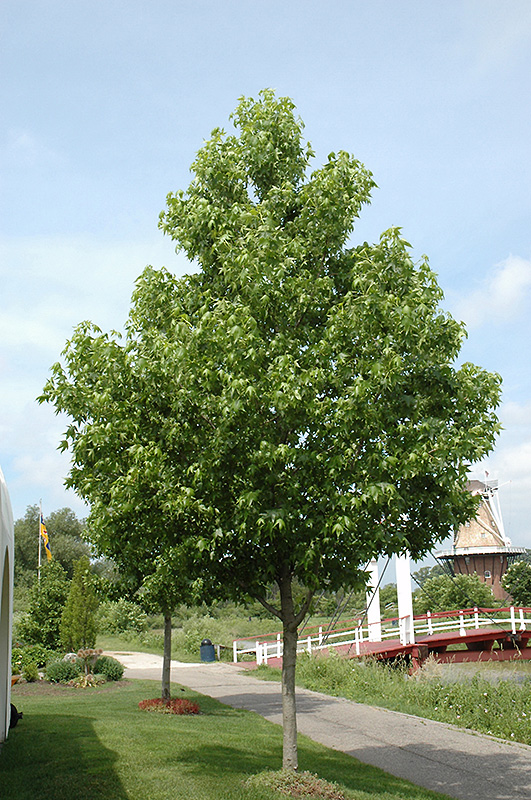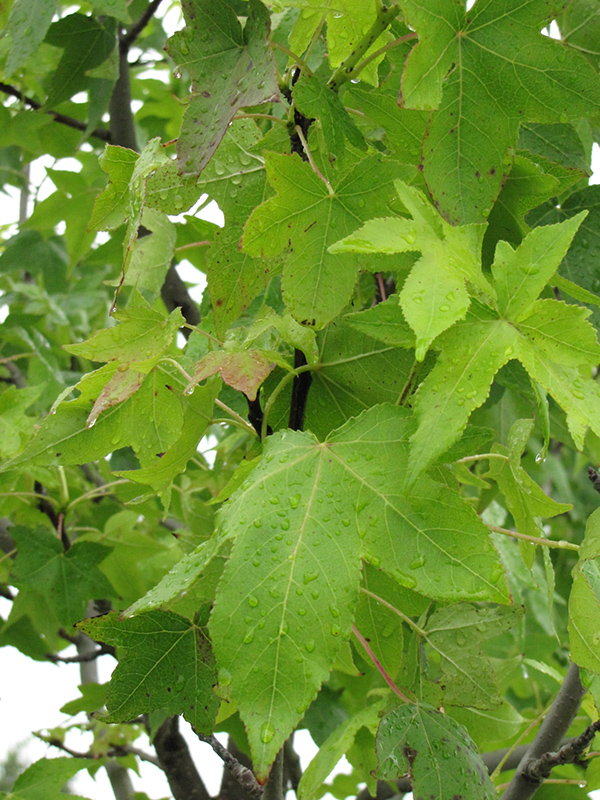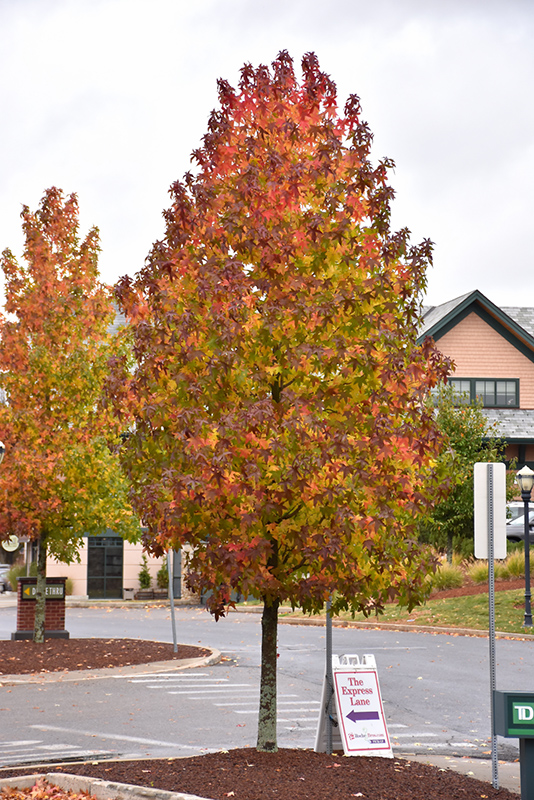Digging deeperPlant Library
Moraine Sweet Gum
Liquidambar styraciflua 'Moraine'
Height: 65 feet
Spread: 45 feet
Sunlight:
![]()
Hardiness Zone: 5
Other Names: American Sweet Gum
Description:
A tall, shapely shade tree with interestingly shaped leaves that turn brilliant red and purple in fall; somewhat particular about growing conditions, hardier than the species; fruit is spiny and can be somewhat messy, use where this will not be a problem
Ornamental Features
Moraine Sweet Gum has forest green deciduous foliage on a tree with an oval habit of growth. The lobed palmate leaves turn an outstanding red in the fall. However, the fruit can be messy in the landscape and may require occasional clean-up.
Landscape Attributes
Moraine Sweet Gum is a deciduous tree with a strong central leader and a shapely oval form. Its average texture blends into the landscape, but can be balanced by one or two finer or coarser trees or shrubs for an effective composition.
This tree will require occasional maintenance and upkeep, and is best pruned in late winter once the threat of extreme cold has passed. It is a good choice for attracting birds and squirrels to your yard, but is not particularly attractive to deer who tend to leave it alone in favor of tastier treats. Gardeners should be aware of the following characteristic(s) that may warrant special consideration;
- Messy
Moraine Sweet Gum is recommended for the following landscape applications;
- Accent
- Shade
Planting & Growing
Moraine Sweet Gum will grow to be about 65 feet tall at maturity, with a spread of 45 feet. It has a high canopy of foliage that sits well above the ground, and should not be planted underneath power lines. As it matures, the lower branches of this tree can be strategically removed to create a high enough canopy to support unobstructed human traffic underneath. It grows at a fast rate, and under ideal conditions can be expected to live for 80 years or more.
This tree should only be grown in full sunlight. It prefers to grow in average to moist conditions, and shouldn't be allowed to dry out. It is very fussy about its soil conditions and must have rich, acidic soils to ensure success, and is subject to chlorosis (yellowing) of the foliage in alkaline soils. It is somewhat tolerant of urban pollution. Consider applying a thick mulch around the root zone in winter to protect it in exposed locations or colder microclimates. This is a selection of a native North American species.
A NetPS Plant Finder tool
This Plant Library is for informational purposes only. We may or may not carry the items listed. During many times of the year, we may carry many more plants in our store than are listed in the Plant Library. Please contact us directly at 303-690-4722 or visit our store for current availability and for assistance.


